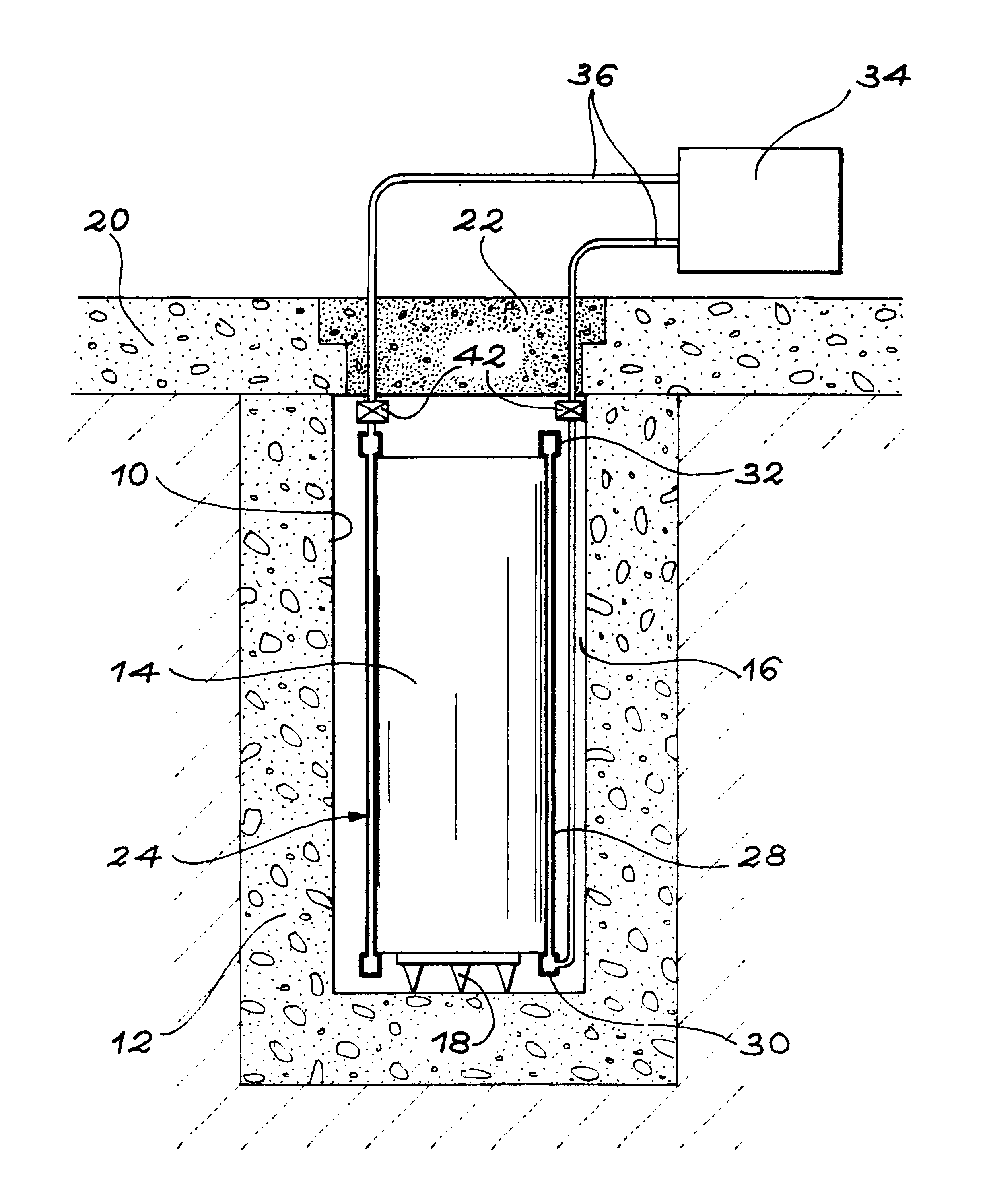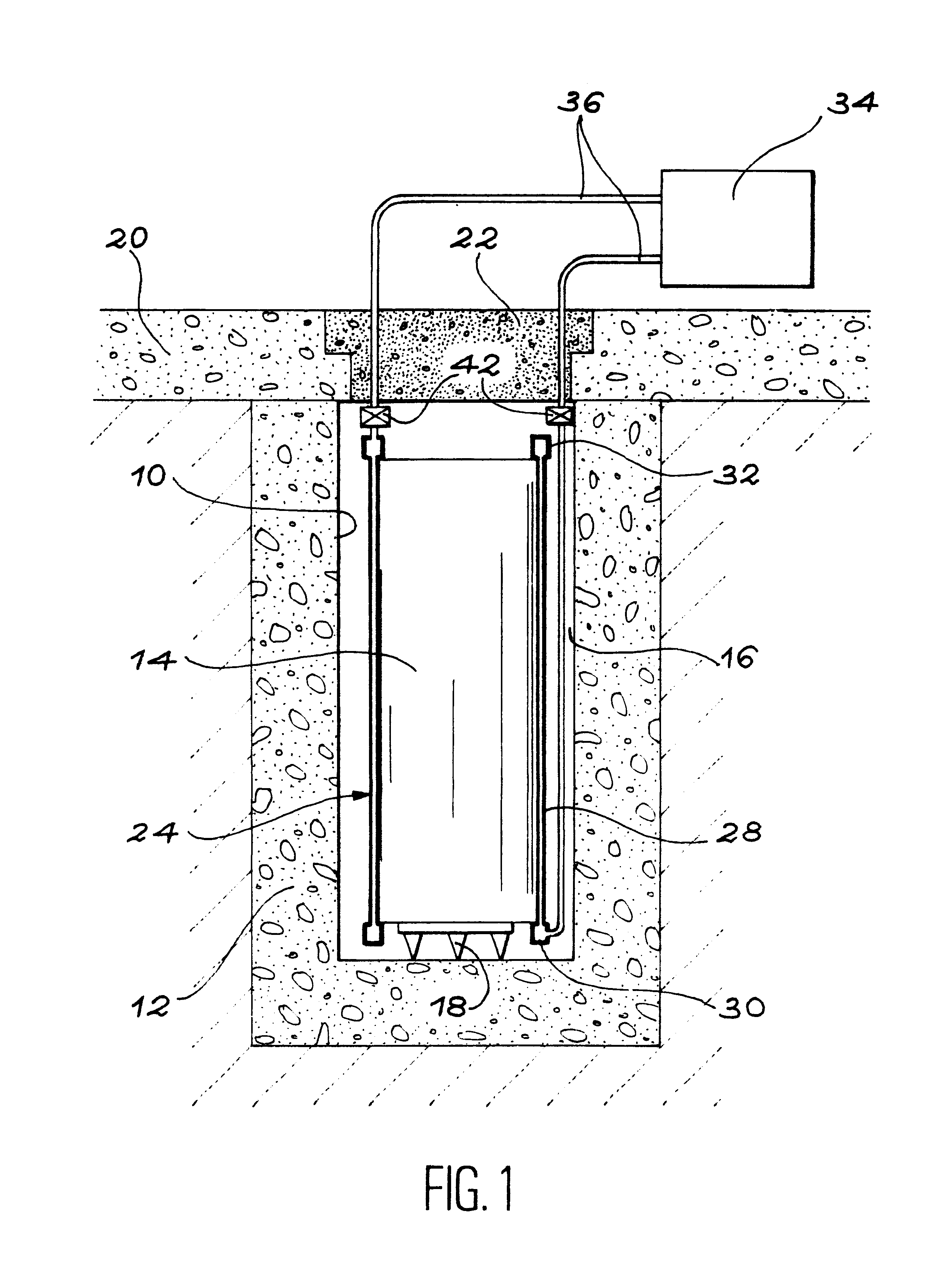Installation for very long term storage of heat-generating products such as nuclear waste
a technology for installation and storage of nuclear waste, which is applied in the direction of stationary tubular conduit assemblies, reactor fuel elements, protective foundations, etc., can solve the problems of hazardous calorific products such as nuclear waste storage, dangerous for the environment, and the cooling is achieved through a primary circui
- Summary
- Abstract
- Description
- Claims
- Application Information
AI Technical Summary
Benefits of technology
Problems solved by technology
Method used
Image
Examples
Embodiment Construction
FIG. 1 is a very schematic diagram of part of a very long-term storage installation for calorific products, such as nuclear waste, built in accordance with the invention.
The installation comprises at least one sealed cavity 10, such as an embedded trench, whose sides and bottom are delimited by concrete walls 12.
In the described embodiment, cavity 10 is in the form of a rectilinear embedded trench. This trench is able to house several containers 14 in which the products to be stored are packaged. However, the shape of cavity 10 may be different while remaining within the scope of the invention. Therefore, it is possible for each of containers 14 to be placed in a separate, individual cavity.
In similar manner, the containers 14 used to confine the products to be stored are metal containers whose size and shape may vary while remaining within the scope of the invention. In the embodiment illustrated by way of example, the containers 14 are of cylindrical shape and are placed side by s...
PUM
 Login to View More
Login to View More Abstract
Description
Claims
Application Information
 Login to View More
Login to View More - R&D
- Intellectual Property
- Life Sciences
- Materials
- Tech Scout
- Unparalleled Data Quality
- Higher Quality Content
- 60% Fewer Hallucinations
Browse by: Latest US Patents, China's latest patents, Technical Efficacy Thesaurus, Application Domain, Technology Topic, Popular Technical Reports.
© 2025 PatSnap. All rights reserved.Legal|Privacy policy|Modern Slavery Act Transparency Statement|Sitemap|About US| Contact US: help@patsnap.com



